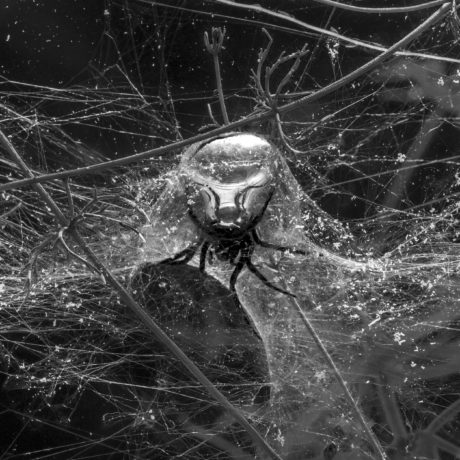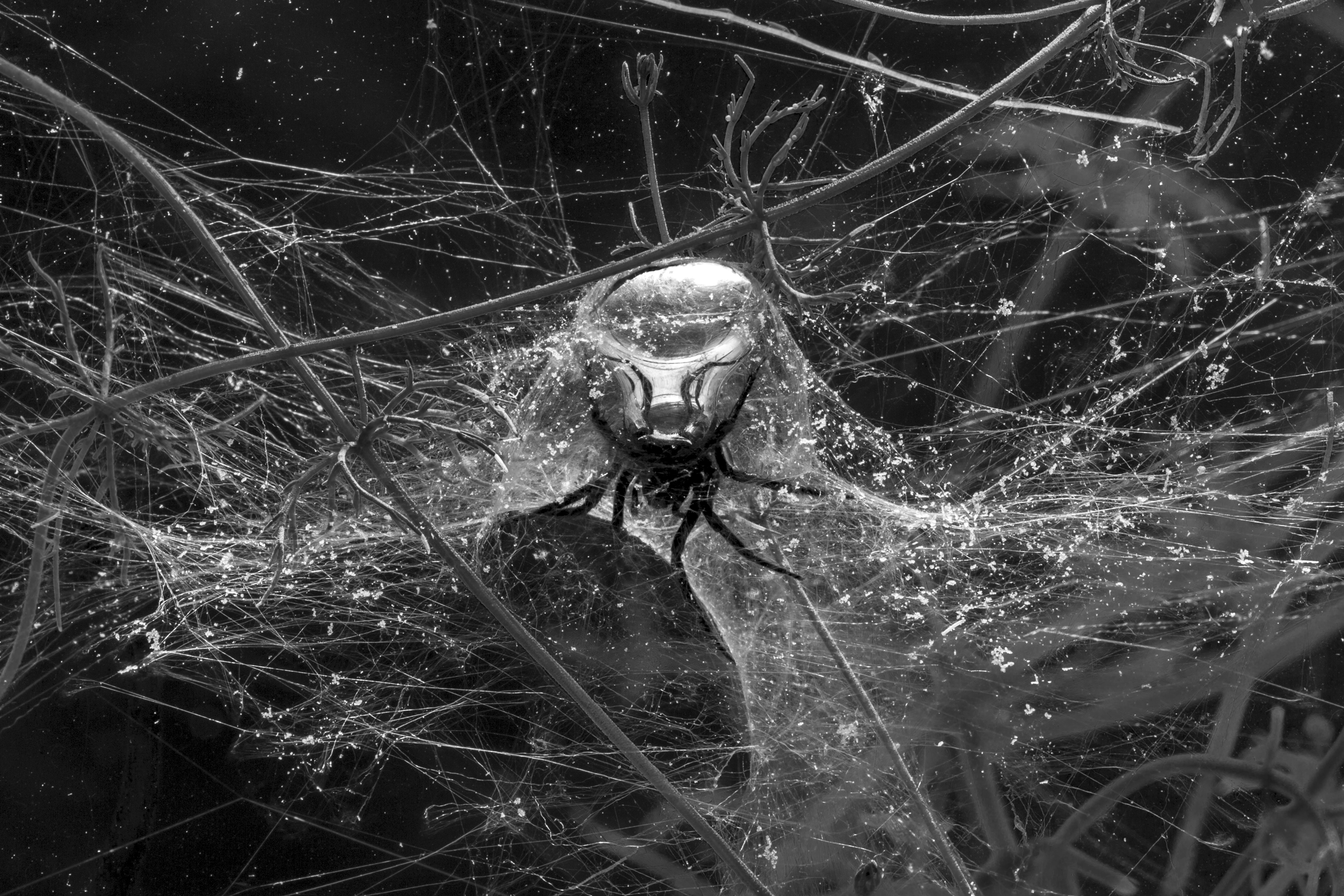
I loathe spiders. They have done nothing to deserve my hatred—I am just deeply afraid of them. The big hairy ones, not the Harvestmen, whose presence attest to the cleanliness of a home. For Halloween I usually have to beg people not to tease me with a plastic incarnation of my phobia. But I think it is getting better with time. Instead of crying at the sight of an arachnid, I jump back and laugh… at myself. And I even somehow managed to grow fond of DC Comics character Peter Parker, who turned into an extraordinary superhero after a simple bug bite (if only there were such a silver cloud in real life).
It seems amusing—and slightly terrifying—then that I find myself in Palais de Tokyo where Tómas Saraceno, the Spiderman of the arts who is well-known for building huge, three-dimensional webs, has been invited to take visitors out of their comfort zone. Maybe this is exactly what I need.
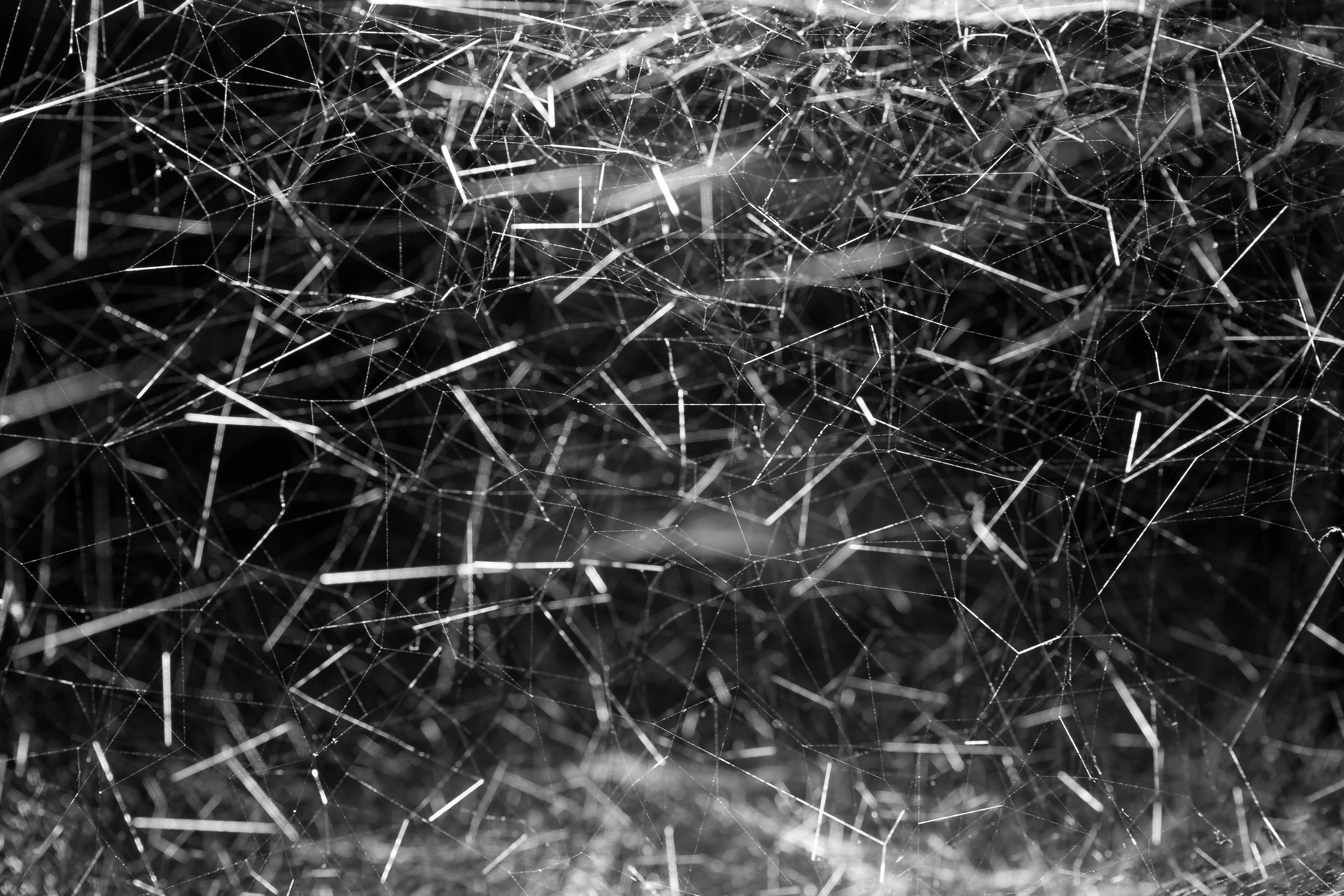
How would he try to convince an arachnophobe like me to come (out of their torpor) and see his show when it opens in October, I wonder? “First of all, there is no persuading anyone,” he tells me. “Everybody is free to do as they see fit. I just hope they will discover some beauty in spiders.” What beauty could these beasts possibly have? Apparently, they can play music. “They are drummers, to be exact. We even scheduled a jam session with them to prove it. Composer Evan Ziporyn has imagined a new piece for an ensemble, who will play inside a web and use it as a score.”
So they are aesthetes, refined beings sensitive to music, sound and vibrations (which does not make them any less terrifying). “Come on! They are not that scary. They are simply different. For example, you would think of them as blind and deaf; which they are, but only from our perspective. Imagine how they must feel about us. For all we know, we might be aliens to them. I am sick of this anthropocentrism, which causes every human to state that the universe revolves around them.” Actually, the whole exhibition will be an invitation to look at the world from a different point of view, to think outside the box.

Aerocene, launches at White Sands (NM, United States), 2015. Photography by Studio Tomás Saraceno, 2014, licensed under CC by Aerocene Foundation 4.0
Saraceno lives with over 200 spiders. Unlike Louise Bourgeois, however, who was fascinated by their gracious curves, his interest is in their webs, “which are part of the animal’s body—spiders are not insects,” he says. “The same way our environment is an extension of us. The show is to question where nature starts and ends.”
The first installation will offer the opportunity for spiders to broaden their horizons. “We found eight different species in the Palais’s basement. 500 as a whole. One of them weaves the most incredible dome-shaped webs. Our plan is to lure them from the lower to the upper floors of the museum into the main galleries, where they will interact with one another.” A mixer for spiders? Some are said to be asocial, which means they do not share their web with their neighbours. They keep themselves to themselves. One may even say, they are lone wolves. So why bring them together? “To see how they will react, merge their habitats. If I play the guitar, and you give me a bass, I may be able to adapt. Plus, I am from Argentina, remember, I like to say that it takes two to tango,” jokes Saraceno.
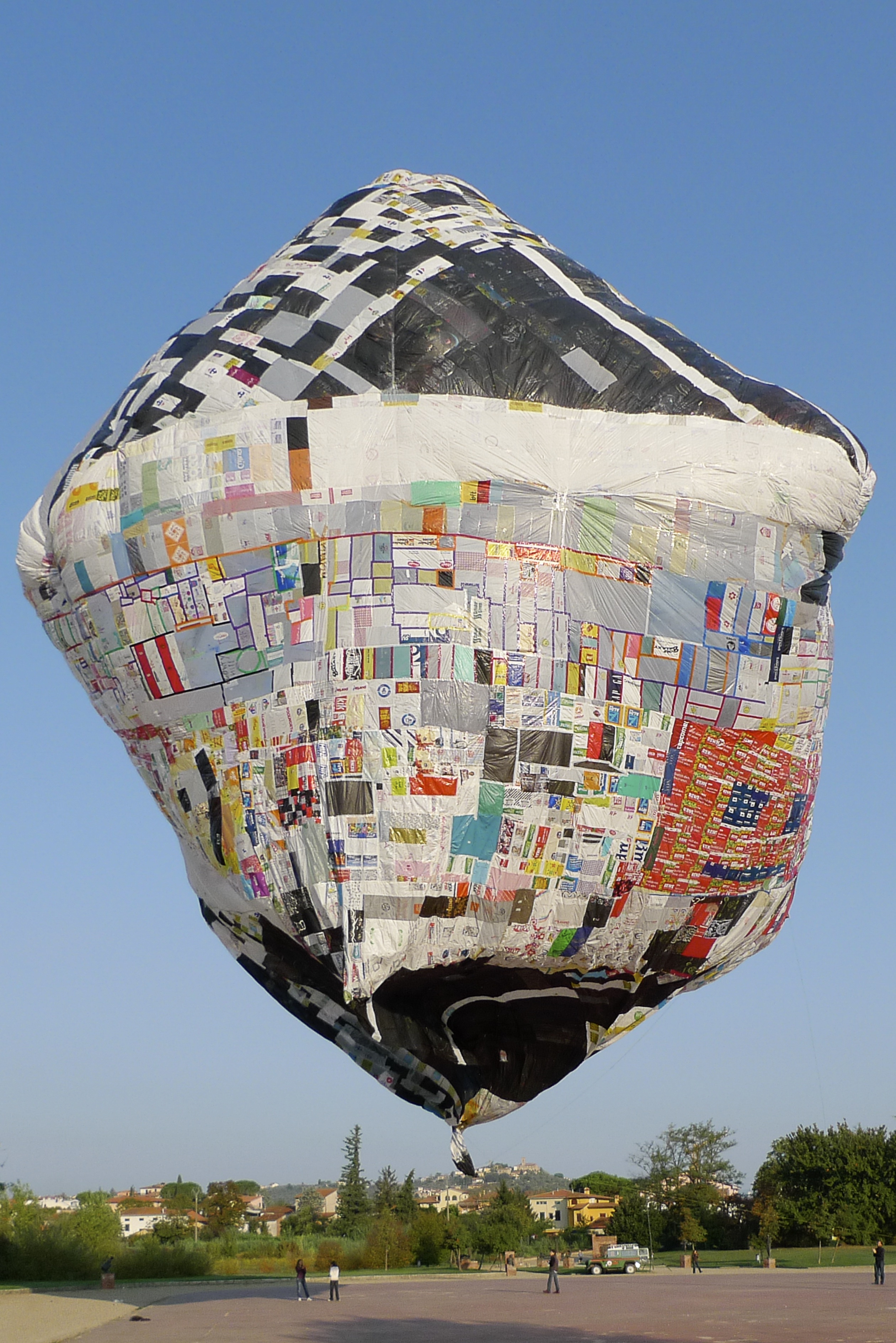
The second installation, Sounding the Air is about putting humans in spiders’ shoes, and brings us to the title of the show, that curator Rebecca defines as “a poetical odyssey around the question of air”. If the show’s title, On Air, conveys the idea of a radio broadcast—where there are waves, there are vibrations, which is a means for spiders to communicate—it also alludes to spiders’ approach to the world, from above, which already inspired Saraceno. In Orbit, a twenty-five-metre wire-woven net which was suspended above the foyer of the Kunstsammlung Nordrhein Westfalen in Düsseldorf (2014), could be walked on by visitors.
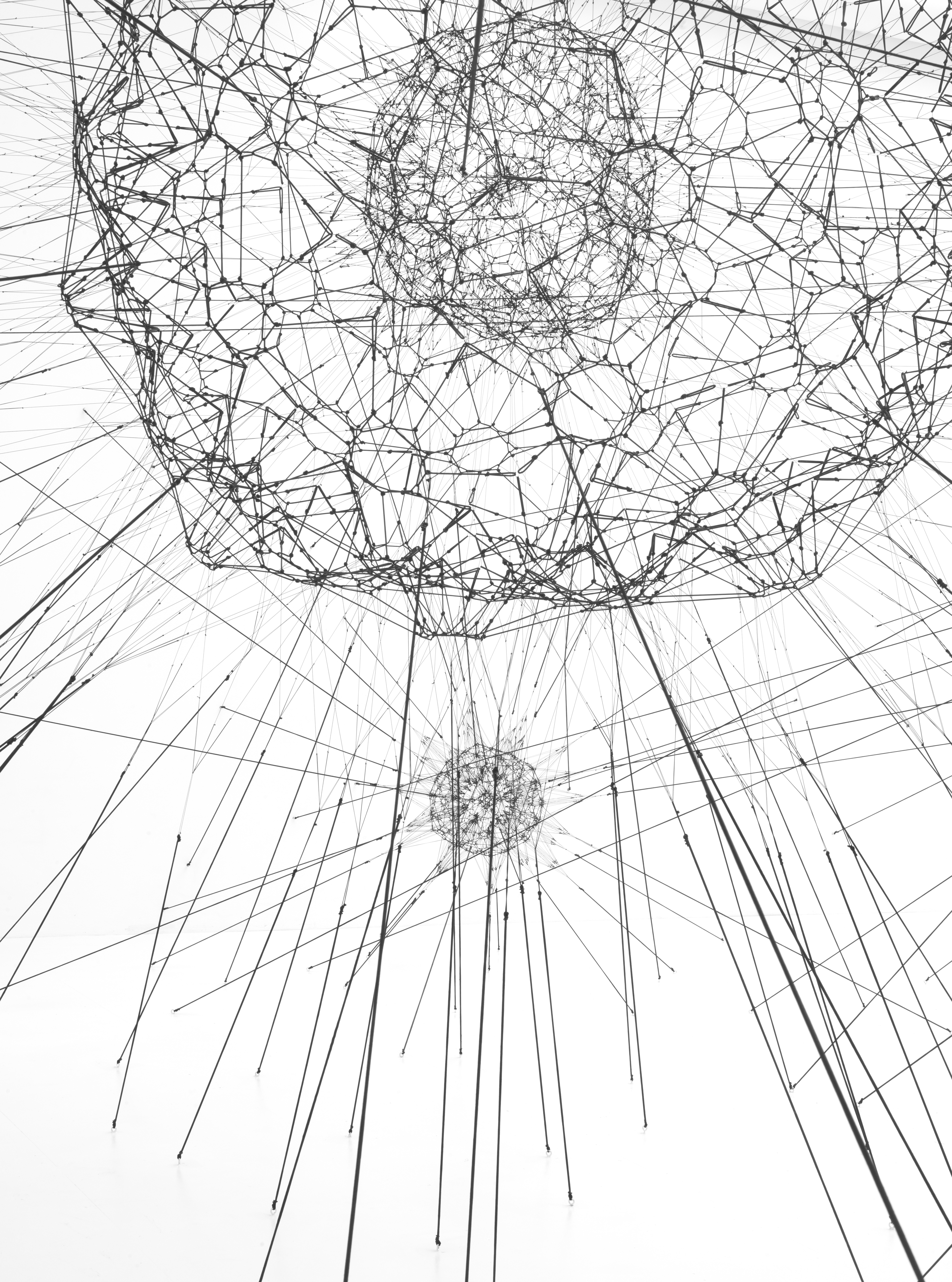
The exhibition wil not be entirely arachno-oriented, and Saraceno’s surprising passion for these puzzling creatures stems from his interest in the origins of the cosmos and the structure of spacetime. In his eyes, the Earth is rooted within a web-like structural dimension. This is how he got to invent the first machine capable of scanning, digitalizing and measuring a three-dimensional spider’s web. The first scan in history was made on a Black Widow spider’s web and first presented in 2010 at the Bonniers Konsthall in Sweden.
The show will also feature older works by Saraceno, such as Aerocene, which is an open-source community project launched in 2015 for artistic and scientific exploration of environmental issues. “All installations are interconnected. What happens in a room impacts another. This is why this show is in that sense the largest I have ever done.”
Images courtesy the artist; Tanya Bonakdar Gallery, New York; Andersen’s Contemporary, Copenhagen; Pinksummer contemporary art, Genoa; Esther Schipper, Berlin; Ruth Benzacar, Buenos Aires unless otherwise stated
